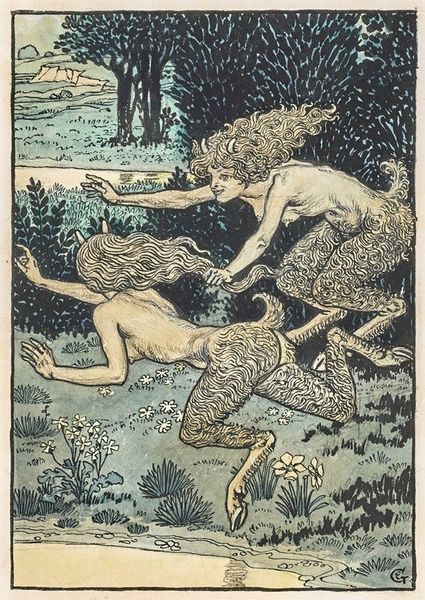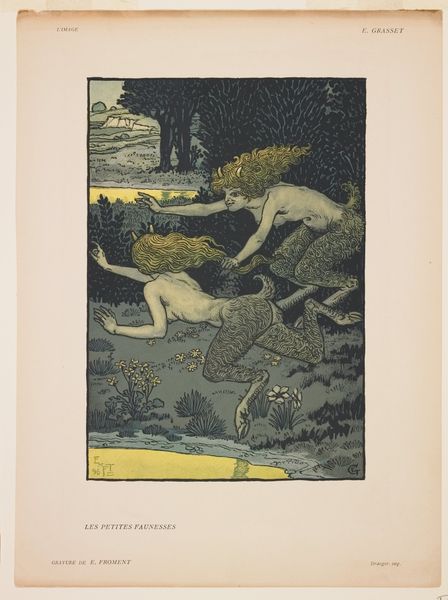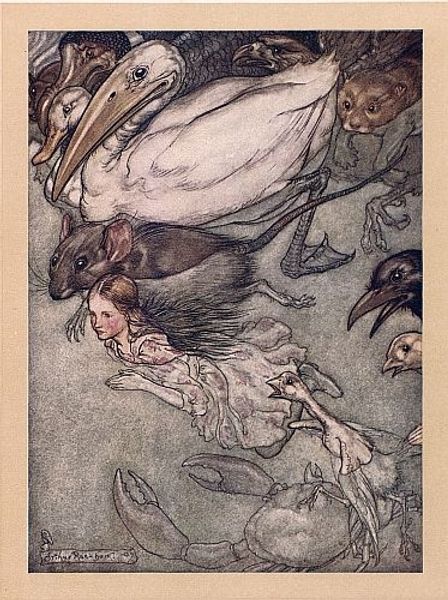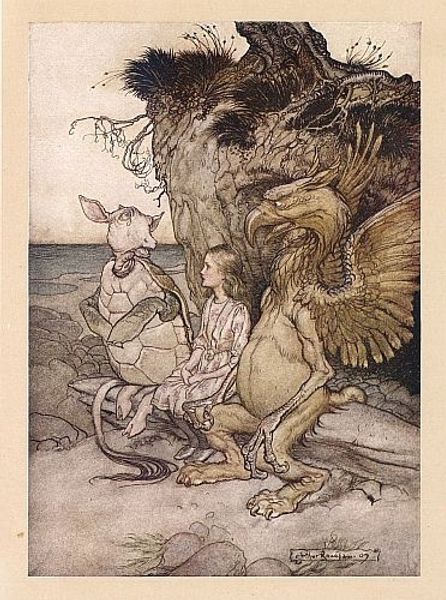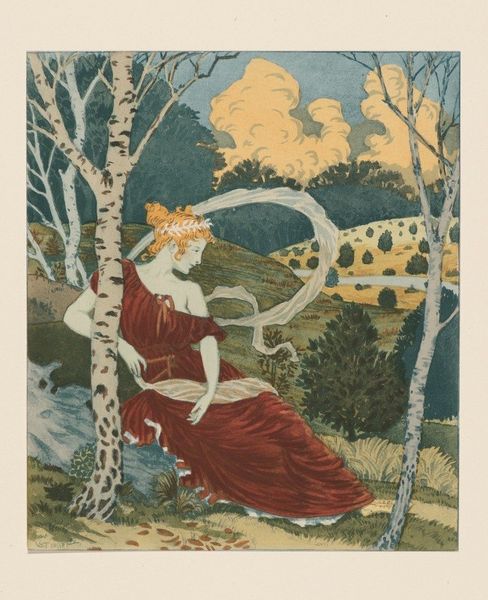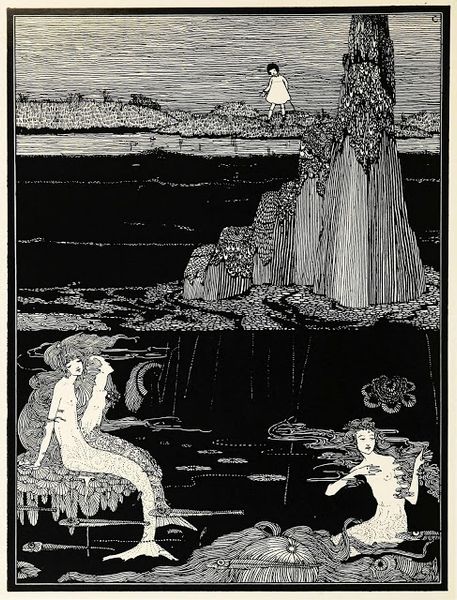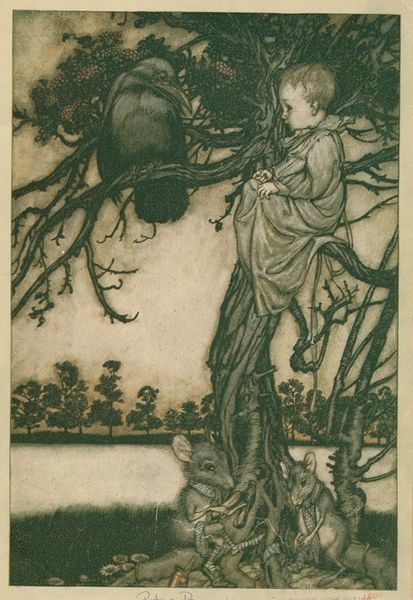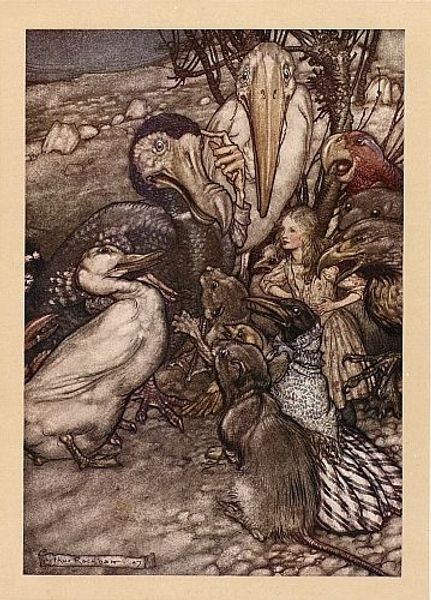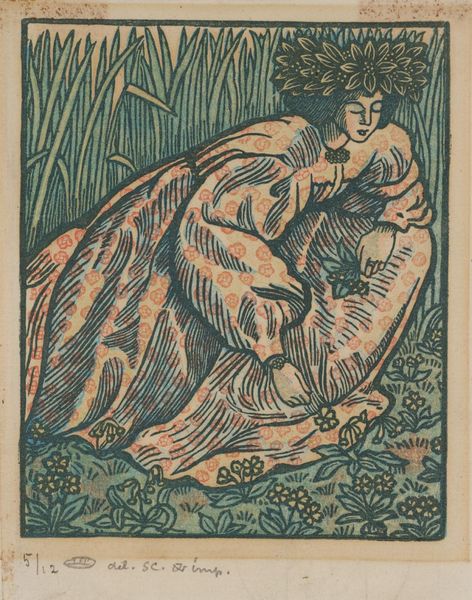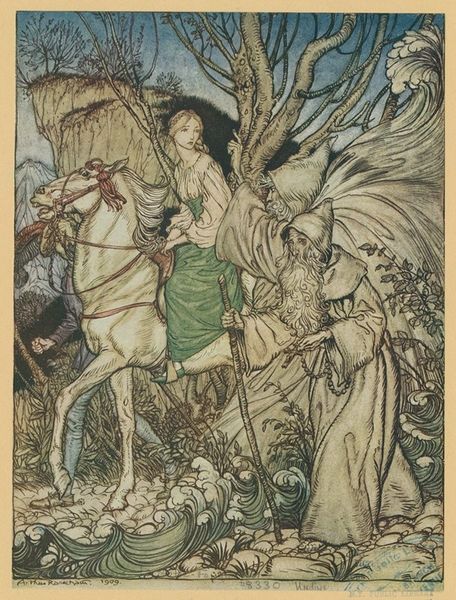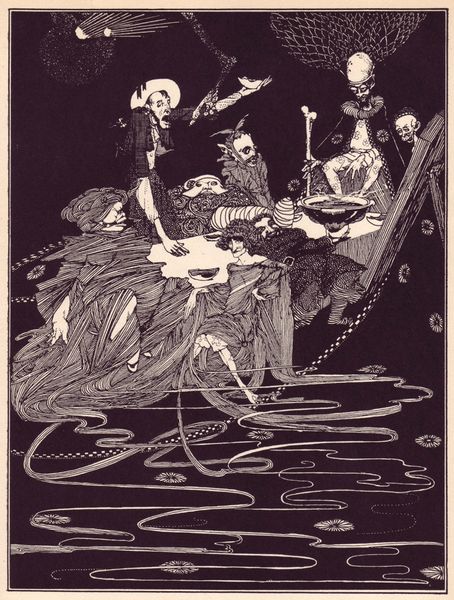
print, linocut
#
art-nouveau
# print
#
pen illustration
#
linocut
#
landscape
#
figuration
#
linocut print
#
pen work
#
symbolism
Copyright: Public domain
Eugène Grasset created "Les petites faunesses," populated by mythological female creatures, using color lithography. Grasset was a Swiss-born artist who found success in Paris during the late 19th century, a time marked by rapid industrialization and a growing interest in the decorative arts. These faunesses, with their hybrid human and animal forms, appear to frolic freely in nature, embodying a kind of liberated femininity. Grasset's artistic choices evoke a sense of freedom and connection with the natural world, providing a counterpoint to the constraints of urban life. The faunesses also invite us to consider the interplay between human and animal, culture and nature, in shaping female identity. While the male gaze is still present, there's a sense of autonomy and uninhibited joy in their movements. Ultimately, "Les petites faunesses" is more than a decorative print; it's a reflection on the complex relationship between gender, nature, and society, inviting us to reflect on the ongoing quest for freedom and self-expression.
Comments
No comments
Be the first to comment and join the conversation on the ultimate creative platform.
